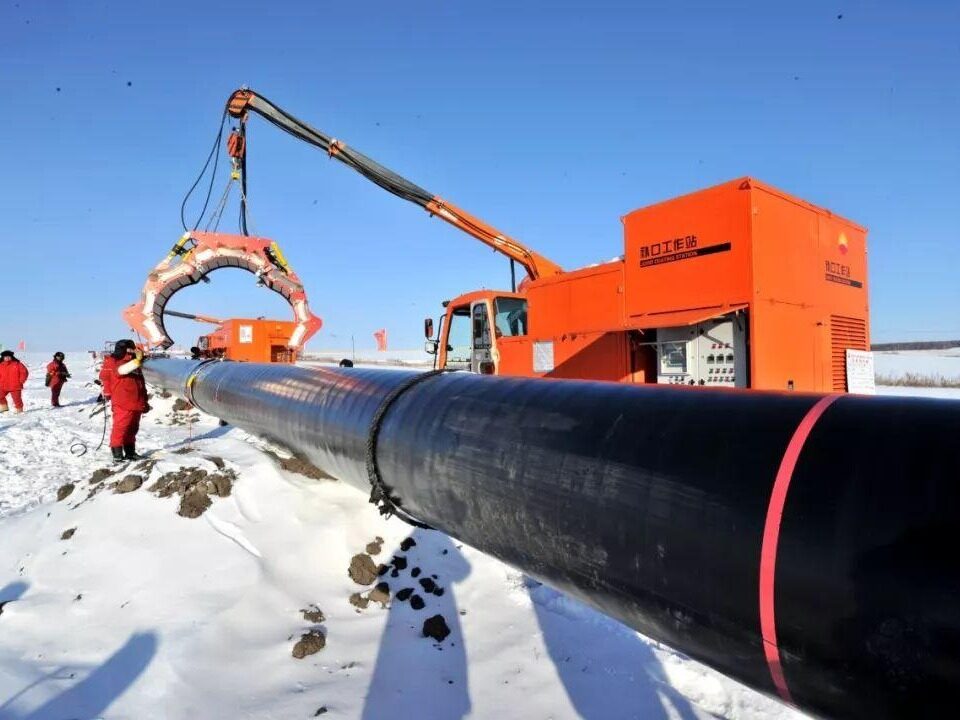
- China's four major energy channels have undertaken the task of ensuring the balance of energy supply and demand in the country
On December 2, 2019, the Sino-Russian Eastern Route Natural Gas Pipeline was put into operation and ventilated, marking the completion and commissioning of all four strategic energy channels in China, and China's oil and gas pipeline industry has realized a pattern of “all directions” of oil and gas imports.
In China, pipelines are both ancient and young transportation methods. As early as the 3rd century BC, China used bamboo to connect into pipelines to transport brine, opening the world's first pipeline transportation. With the rapid development of China’s economy, China’s dependence on foreign oil and gas has risen sharply. In order to ensure national energy security, the Party Central Committee attaches great importance to the construction of China’s four major oil and gas strategic channels, seizes the international opportunities of economic globalization and, through good-neighborly and friendly cooperation, Layout of energy import channels in the four major directions of northeast, southwest and sea.
On the global pipeline map, China's four major energy strategic channels and the domestic oil and gas backbone pipeline network are like a white swan, spreading their wings and flying high, writing a new chapter in international energy cooperation.
The Northeast Energy Channel is composed of Sino-Russian oil and gas pipelines, which transport 30 million tons of crude oil and 38 billion cubic meters of natural gas annually.
The Northwest Energy Channel is composed of the China-Kazakhstan crude oil pipeline and the China-Central Asia Natural Gas Pipeline. It transports 20 million tons of crude oil and 60 billion cubic meters of natural gas annually, injecting impetus into the economic and social development of Turkmenistan, Uzbekistan, Kazakhstan and China, and has become a multinational friendship A classic of cooperation.
The Southwest Energy Corridor is the China-Myanmar Oil and Gas Pipeline, which transports 22 million tons of crude oil and 12 billion cubic meters of natural gas annually to continue the "paukwave friendship" passed down from generation to generation between China and Myanmar.
The maritime energy channel is China's maritime transport of imported oil and gas from Africa, the Middle East, Australia and other places to the eastern coastal area, witnessing the results of mutually beneficial and win-win cooperation between China and other countries.
China's pipeline technology has achieved a leap from catching up to the world leader. It has built 136,000 kilometers of oil and gas pipelines. In particular, the completion and commissioning of the four strategic energy channels has alleviated the threat of Malacca’s predicament to maritime energy transportation and has been positive for the economic development of China and partner countries. Promoting role.
Sino-Russian oil and gas pipeline traverses the frozen soil of Siberia
The winding oil and gas pipeline transports not only the blood of industry, but its direction is related to national security, economic development and world geopolitical relations. As a large developing country, China's economy is developing rapidly and industrialization is advancing rapidly, and the demand for oil and gas resources is also increasing. Russia, which is in urgent need of injecting impetus into economic development, is gradually shifting its focus to the Asia-Pacific region, especially the market. Potential China. With oil and gas as the medium, the two neighboring countries of China and Russia are more and more willing to jointly promote mutually beneficial cooperation.
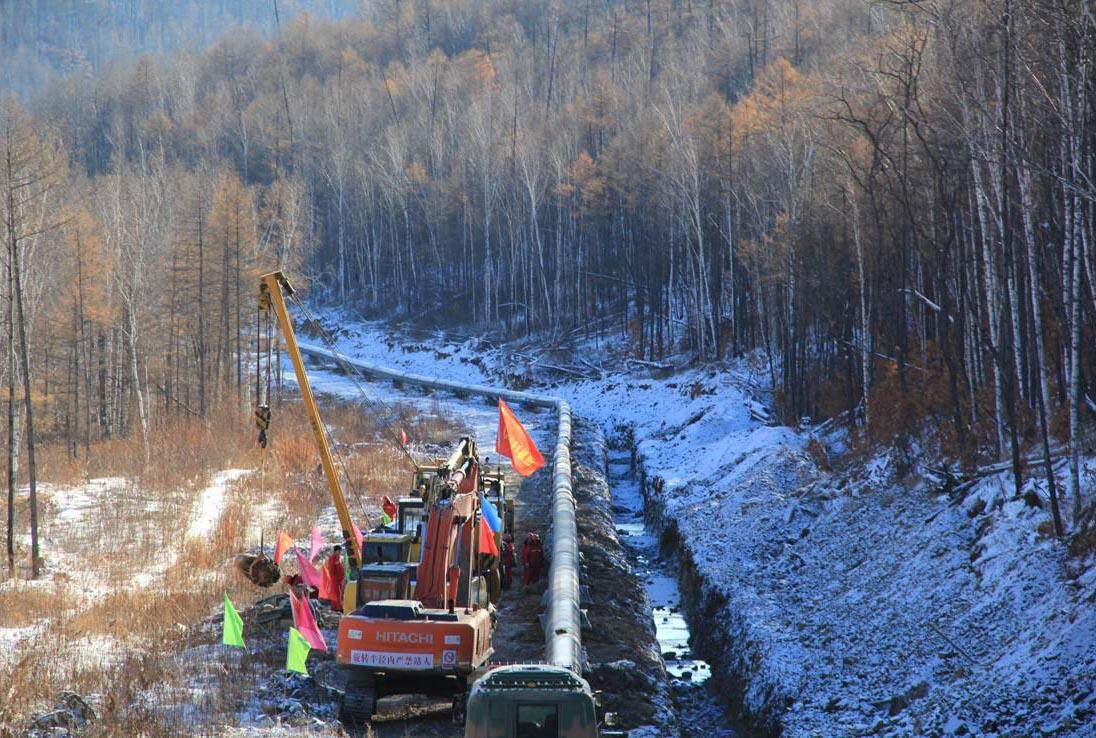
Pan Jiping, a researcher at the Oil and Gas Resource Strategy Research Center of the Ministry of Land and Resources, said that China-Russia natural gas cooperation will help promote the diversification of China's energy imports, increase the supply of natural gas, and greatly ease the contradiction between China's coal-based energy supply and demand in the north. At the same time, it will help Russia to advance its strategy of diversifying oil and gas exports, promote the development of the Far East, and drive the continuous improvement of the domestic economic situation.
As a friendly neighbor of China, Russia has a unique resource advantage. Its oil and natural gas production ranks second in the world, and energy products account for 40% of its GDP. It is estimated that by 2030, the annual production of natural gas in Russia will reach 880 billion cubic meters to 940 billion cubic meters.
Supply and demand are in agreement, and China and Russia are getting closer and closer in energy cooperation. Especially in the past two years, with the personal promotion and strong support of the leaders of the two countries, China-Russia relations have developed in great strides, and the energy cooperation between the two countries is also advancing at a faster pace. In 2008, China and Russia established an energy cooperation mechanism at the deputy prime minister level, which is responsible for coordinating the energy cooperation between the two countries and resolving problems arising from the cooperation in a timely manner. In April 2009, the Chinese and Russian governments signed the "China-Russia Government’s Regarding Petroleum "Agreement on Cooperation in the Field", agreed to build the Sino-Russian crude oil pipeline, and authorized PetroChina and the Russian pipeline transportation company to jointly build; in September 2013, PetroChina and Russia's Novatek signed a share purchase agreement to purchase the Yamal LNG project 20% equity interest; In May 2014, PetroChina and Gazprom signed the "China-Russia Eastern Pipeline Gas Supply Contract". Russia will send 38 billion cubic meters of natural gas to China each year.
The signing of a series of major oil and gas cooperation agreements has accelerated China-Russia energy cooperation and made the two countries realize that mutually beneficial and win-win cooperation is in line with each other’s vision. The hands of the two friendly neighbors are once again firmly held together, and the energy cooperation between the two countries is also Entering a stage of substantive progress, the start of the Sino-Russian East Route natural gas pipeline has turned the two countries' natural gas cooperation from a paper agreement into a practical action. The second natural gas transportation line between China and Russia, the Sino-Russian West Route Natural Gas Pipeline, is also under construction. In November 2014, the two sides signed the "Framework Agreement Concerning the Supply of Natural Gas from Russia to China along the West Route Pipeline". The scale is 30 billion cubic meters per year. The rolling in of the east and west air flows will make Russia's natural gas supply to China expected to reach nearly 70 billion cubic meters per year. With the construction of China's four major energy channels, the global onshore gas supply center shifts to the Asia-Pacific region, and Russia is also expected to become a bridgehead for Northeast Asia's gas supply.
As each other's largest neighbors, as well as major emerging market countries, the energy cooperation between China and Russia is jointly promoted by internal and external factors. This cooperation is long-term, stable, mutually beneficial and win-win. Diversified import sources will significantly enhance China's oil and gas supply capacity, reduce dependence on a single source of imports, and provide a strong guarantee for China's energy security construction. This cooperation is also conducive to Russia's diversification of natural gas exports and increase its influence in the Asia-Pacific oil and gas market.
The energy golden bridge promotes mutual benefit and win-win results between China and Russia. As the person in charge of the Chinese side said when attending the groundbreaking ceremony of the offshore section of the Sino-Russian East Route Natural Gas Pipeline, "The Sino-Russian natural gas pipeline will become a new important link that connects the traditional friendship and friendly cooperation between the two countries."
Central Asian oil and gas pipeline lights up the Silk Road Economic Belt
After 17 years of persistent depiction, a beautiful energy arc finally appeared in the land of western China. The energy cooperation between China and Central Asian countries is known by the industry as a powerful engine for the construction and development of the Silk Road Economic Belt. Many people have noticed that when Xi Jinping put forward the concept of the Silk Road Economic Belt, he focused on energy cooperation. During his visit to Central Asian countries in September 2013, he attended and witnessed PetroChina's oil and gas cooperation projects in Central Asia 6 times. He even took a morning to rush to the Fuxing Gas Field No. 1 Natural Gas Processing Plant undertaken by PetroChina to participate in the completion and commissioning ceremony, and put forward hopes and requirements for oil and gas cooperation in Central Asia.
"As the main force in the construction of the Silk Road Economic Belt, PetroChina's oil and gas cooperation in Central Asia has been accelerating in recent years." said Wang Yilin, Secretary of the Party Committee of PetroChina. In particular, the Central Asia Natural Gas Pipeline, which has attracted worldwide attention, literally connects Turkmenistan, Uzbekistan, Kazakhstan, China and other Asian countries in series and parallel, lighting up the bright lights of the Silk Road Economic Belt.
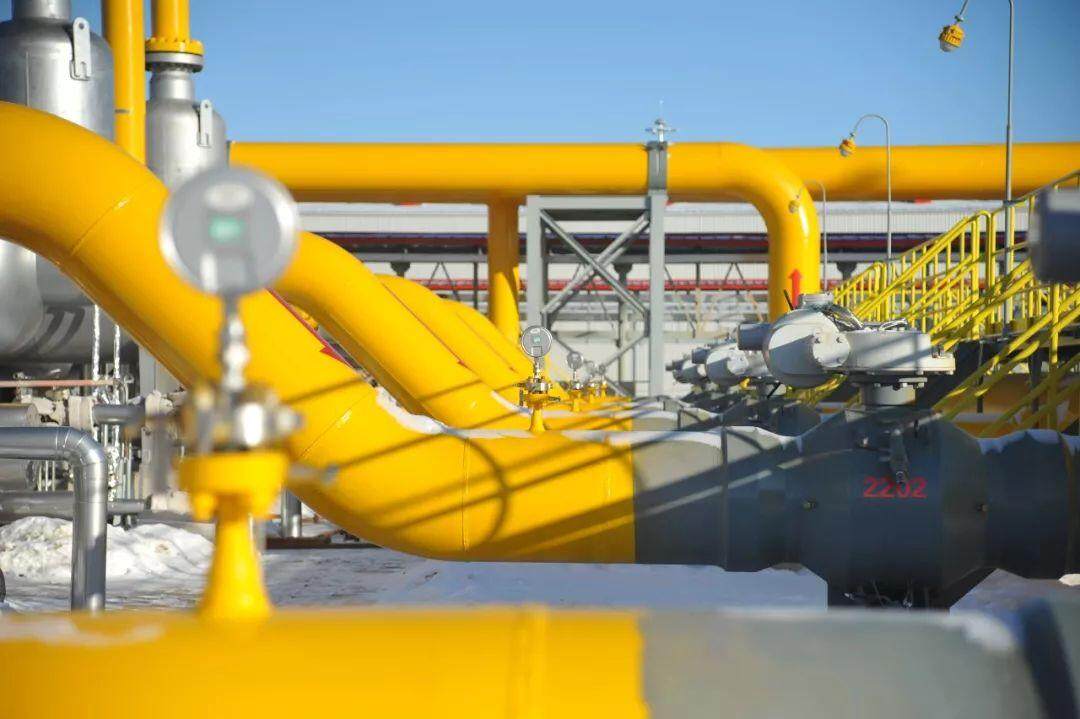
The proposal of the Silk Road Economic Belt undoubtedly has extremely rich connotations, and energy cooperation is considered to be the top priority. The economic and resource complementarity between China and Central Asia determines that energy cooperation represented by oil and gas is not only a win-win project that promotes the common economic and social development of China and Central Asian countries, but also a realistic choice for the benefit of people in many countries.
Central Asia, known as the "Second Middle East", is an area where oil and gas resources are rich in the world's attention. The gas reserves of Turkmenistan, Kazakhstan, and Uzbekistan together account for nearly one-seventh of the world. Among them, Turkmenistan alone surpasses 1/9 of the world, and is one of the countries with the most abundant natural gas reserves in the world, with proven natural gas reserves of 17.5 trillion cubic meters; Kazakhstan is the 11th largest oil and gas resource country in the world, especially It is that oil reserves account for 3.3% of the world's oil reserves. China is the world's largest energy consumer, providing a huge market for Central Asia's oil and gas exports.
The oil and gas cooperation between China and Central Asia is of great significance to China. Wang Yilin told reporters that currently, natural gas imported from Central Asia is connected to the West-East Gas Pipeline through the Central Asia Pipeline, covering users in 25 provinces, municipalities, autonomous regions, and Hong Kong Special Administrative Region in China, benefiting more than 500 million people. According to estimates, 100 billion cubic meters of natural gas is equivalent to replacing 133 million tons of coal, reducing carbon dioxide emissions by 142 million tons, and sulfur dioxide by 2.2 million tons.
"For the resource countries in Central Asia, they will benefit more from cooperation with China." Wang Yilin emphasized. Central Asian countries have obtained abundant funds and technology through cooperation with Chinese companies, which has promoted the rapid development of the local oil industry. In cooperation with PetroChina, the oil and gas output of major projects such as the Aktobe project, PK project, and Mangashtau project in Kazakhstan has increased significantly. Turkmenistan’s Amu Darya natural gas project and the Central Asia natural gas pipeline project were put into operation on schedule. Uzbekistan’s oil and gas projects Significant progress has been made in cooperation.
At the same time, the oil and gas cooperation in Central Asia has promoted the overall social and economic improvement of the resource countries. According to statistics, PetroChina has paid more than 30 billion U.S. dollars in taxes and fees to the governments of the host countries through its enterprises in Central Asia, provided more than 34,000 jobs for local people, and invested more than 200 million U.S. dollars in social welfare undertakings. Local infrastructure construction , Culture, education and public health, and people’s lives have undergone tremendous changes as a result.
The Southwest Energy Channel continues to write the “Paukwave Friendship” between China and Myanmar
After ten years of hard work, the China-Myanmar oil and gas pipeline has become a landmark project for large-scale energy cooperation along the Belt and Road and a signature project of the China-Myanmar Economic Corridor. The China-Myanmar Oil and Gas Pipeline is the fourth largest energy import channel after the China-Kazakhstan Petroleum Pipeline, the Central Asia Natural Gas Pipeline, and the China-Russia Crude Oil Pipeline. This pipeline is 771 kilometers long in Myanmar and 1631 kilometers long in China. Both pipelines start from Kyaukpyu, Myanmar, and enter China from Ruili City, Yunnan Province. After entering China, the China-Myanmar oil and gas pipeline realized oil and gas pipeline separation in Anshun City, Guizhou Province. The oil pipeline passed through Guizhou Province to Chongqing City, and the gas pipeline passed through Guizhou Province to Guangxi Zhuang Autonomous Region. The project is a downstream project supporting the construction of the China-Myanmar pipeline. After completion, it will produce 7.8 million tons of refined oil annually. It will greatly improve the tight supply of refined oil and insufficient oil and gas transportation capacity in the southwest region. China's oil imports in 2015 About 6.6 million barrels per day, accounting for 59% of total fuel consumption. By 2035, China’s oil imports will increase to 9.7 million barrels per day, accounting for 62% of total oil consumption. Although the consumption of natural gas is not as large as oil, imported natural gas is also an important part of China’s energy demand. China’s natural gas imports reached 1.4 trillion cubic feet in 2015 (approximately 24% of consumption). Will maintain an annual growth rate of 7.5%. Wang Dongjin, deputy general manager of China National Petroleum Corporation, said, “After the completion and operation of the China-Myanmar oil and gas pipeline, China’s crude oil imported from the Middle East will not need to pass through the Strait of Malacca, but will be directly disembarked from Myanmar facing the Indian Ocean andaman Sea and transported to southwest China via the pipeline. The region is of strategic significance for realizing China's energy diversification and ensuring energy security, and the supply of natural gas is also of great significance."
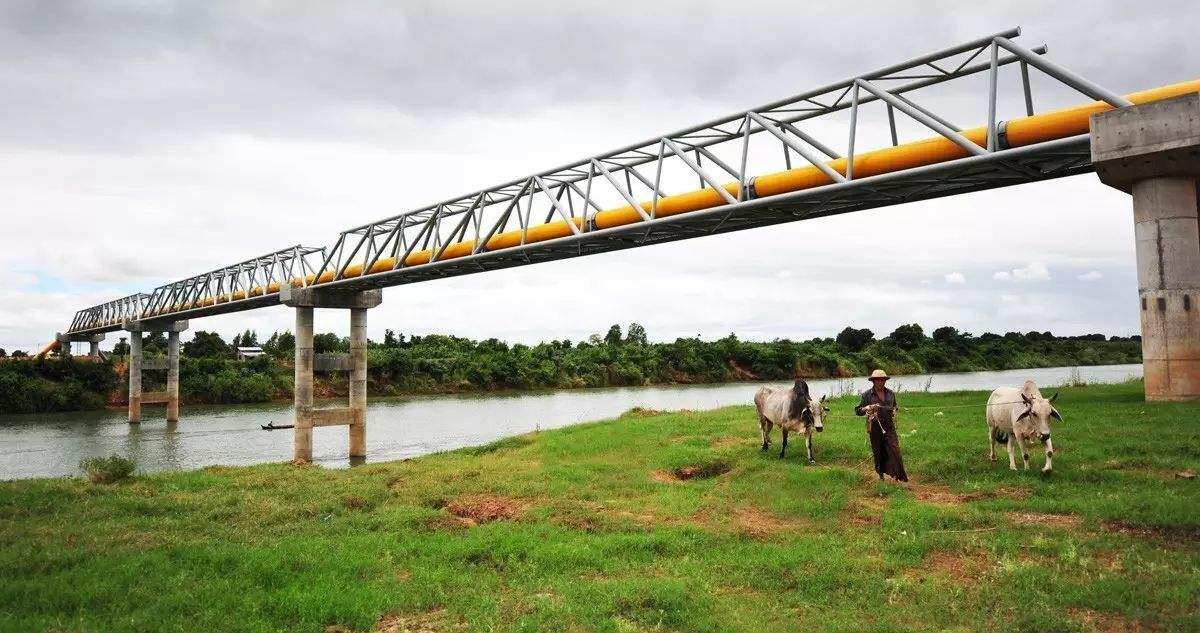
From a long-term perspective, on October 22, 2018, China and Myanmar also launched a railway feasibility study from Muse on the China-Myanmar border to Mandalay in Myanmar. Once the railway is completed, the history of only one road between Myanmar’s Muse and Mandalay will be changed, and this railway is expected to eventually extend to Myanmar’s Kyaukphyu port on the Indian Ocean coast. The opening of Kyaukphyu Port as a transit point for the transportation of goods from southwest China to the periphery of the Indian Ocean. This route is important to the realization of the One Belt One Road strategy, to the promotion of economic restructuring and the transformation of growth models in southwest China, and to the promotion of the society in areas where ethnic minorities live in the border areas. Economic progress has an immeasurable impact. It also eased the threat of the Malacca Strait to China's energy supply and material access to a certain extent.
Overseas energy channels witness mutual benefit and win-win
According to data released by the General Administration of Customs of China, from January to October 2020, China imported 459 million tons of crude oil, an increase of 10.6%, and the average import price was 2286.1 yuan per ton, a decrease of 30.5%; natural gas was 81.261 million tons, an increase of 4.7%. The price was 2326.4 yuan per ton, down 22.1%. China’s oil and gas imports are rising significantly, and overseas channels are constantly expanding. At present, China’s imports of crude oil and natural gas from overseas mainly need to go through the following shipping routes: The first is the Middle East route, and China’s oil imports from the Middle East are mainly from Departing from the Persian Gulf, it passes through the Strait of Hormuz, enters the Indian Ocean via the Arabian Sea, and then reaches the South China Sea from the Strait of Malacca, and finally reaches the mainland of China via the Taiwan Strait. The second one is the African route, which is divided into two. One is from North Africa, starting from the Mediterranean, passing through the Suez Canal and the Red Sea, passing through the Mande Strait, then crossing the Gulf of Aden, into the Arabian Sea, crossing the Indian Ocean, and entering the South China Sea from the Strait of Malacca; the other is from West Africa. Set off, pass the Cape of Good Hope, enter the Indian Ocean, and enter the South China Sea from the Strait of Malacca. The third is the Southeast Asia route to the mainland of China via the Strait of Malacca and Taiwan Strait. In addition, there are also South American routes that enter the Pacific via the Panama Canal and finally to China.
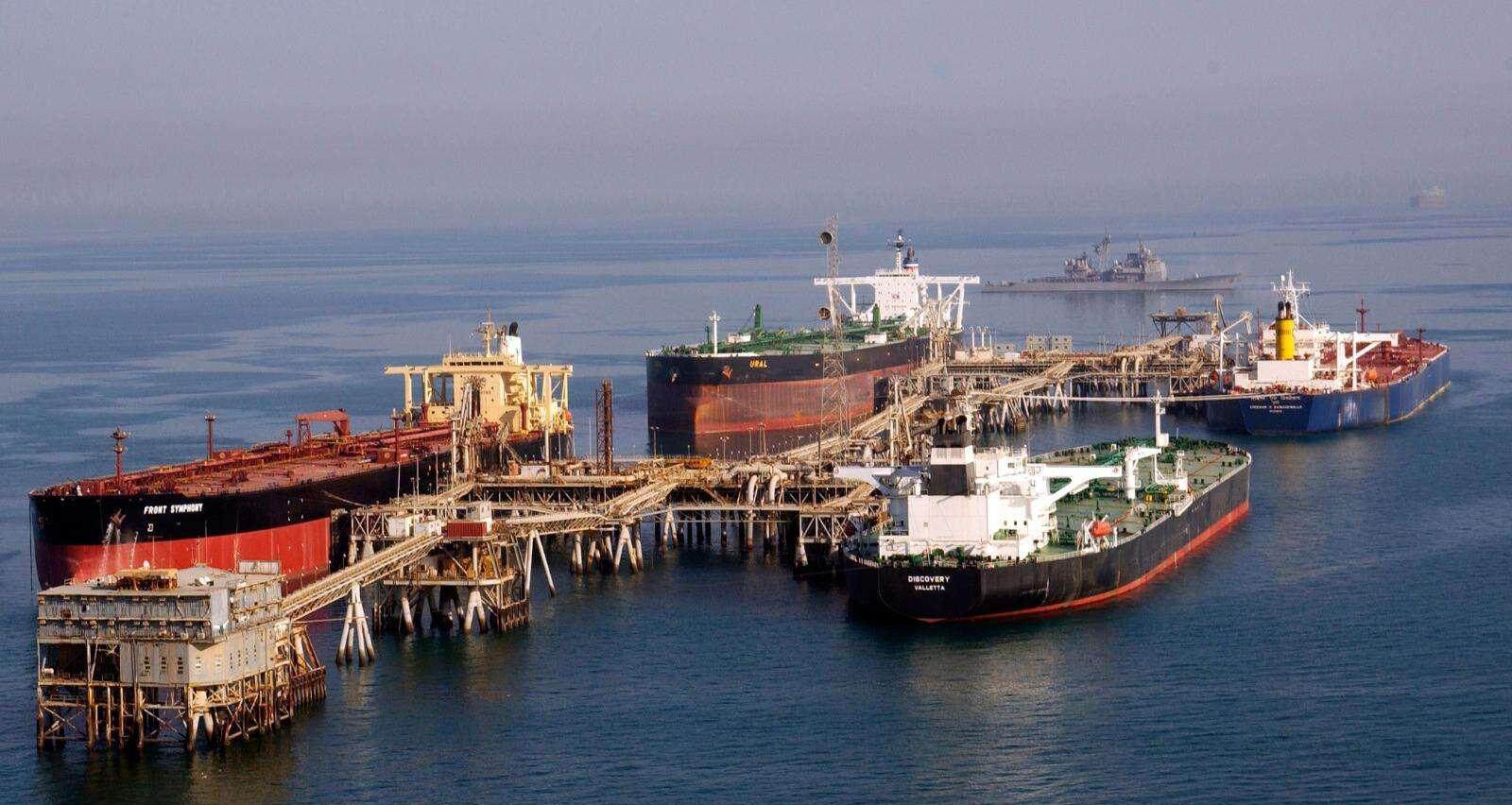
Compared with sea transportation, China's land transportation of oil and gas is only a supplement. The vast majority of oil still needs to be transported by sea, and the Suez Canal, Indian Ocean, Malacca Strait, and South China Sea are the only way to go. This is an objective reality that must be fully faced. .
However, in order to alleviate the troubles caused by the Strait of Malacca, Malaysia has made adjustments for this, and proposed the Malaysian Penang Port to connect with the Thai Songkhla Port Railway. Songkhla Port is a Thai commercial port located in the eastern part of the Malay Peninsula in the southern part of the country. The east bank of the lake estuary, the northeast of the port city, is adjacent to the Gulf of Thailand. Songkhla Port was put into operation at the end of 1988. In the early 1990s, experts from the Shanghai Port Authority were hired to be responsible for operation and management. So far, it is currently the largest deep-water port and cargo import and export terminal in Southern Thailand, with an annual cargo throughput of nearly 1.8 million tons. Export goods include rubber and its products, frozen seafood, canned food, semi-finished furniture, etc. The main imported goods include frozen tuna, fertilizers, machinery and equipment, steel pipes, etc. In recent years, the cargo traffic between Songkhla Port and China has been increasing. Transit at Penang Port, Malaysia, it takes only nine hours to reach Songkhla Port in Thailand via the railway, while it takes nine days to reach Songkhla Port in Thailand through the Strait of Malacca, which saves about eight days. In addition to fuel saving, this road and bridge route is planned. With relative commercial advantages, this plan is also of great significance for solving Malacca's dilemma.
In addition to the Strait of Malacca, China’s offshore oil and gas pipelines still face huge challenges. First, the pressure brought by the US Asia-Pacific rebalancing strategy. The implementation of this strategy will affect the pattern of international relations in the Asia-Pacific region, and will have an important impact on China’s maritime security, and indirectly Put a certain pressure on the security of China's maritime energy channels. Second, the existence and intensification of the Diaoyu Islands and South China Sea issues have brought uncertainties to China's offshore oil and gas security. The third is the predicament of the Malacca Strait. About 80% of China's imported crude oil passes through the strait. Therefore, for China, the Strait of Malacca is a veritable maritime lifeline. Its smoothness is directly related to China's energy security, economic development and national security. The fourth is the threat of piracy and maritime terrorism, and Chinese ships suffer from it. Fifth, the political turmoil in the Middle East and Africa. The Middle East is not only the main starting point for China's energy transportation by sea, but also the main source of imported oil. However, the various contradictions in the region are complex, and there are varying degrees of political instability within the country, Armed conflicts, terrorist activities, etc., these undoubtedly increase the risk of China's energy investment.
International energy channel construction and energy channel security are issues of concern to all countries in the world, and they are also the most severe international challenges facing China at this stage. Like other cooperation mechanisms, the Belt and Road international energy channel cooperation mechanism needs to be promoted and widely used globally, and requires the integration and innovation of international energy cooperation models and cooperation platforms, and the formation of a multi-subject interaction mechanism of communication, dialogue, trust cooperation, and process negotiation. Strengthen international energy channel cooperation under the background of the Belt and Road, deepen the innovation and exploration of the sea-land energy channel cooperation mechanism, expand the diversification of China's energy import channels, and pass the international energy channel cooperation operation mechanism, smooth mechanism, dispute settlement mechanism, benefit distribution mechanism and risk sharing mechanism. Collaborative innovation in azimuth will effectively solve some problems arising in the cooperation of international energy channels and ensure national energy security and sustainable economic development. Editor/Xu Shengpeng
Comment
 Praise
Praise
 Collect
Collect
 Comment
Comment
 Search
Search


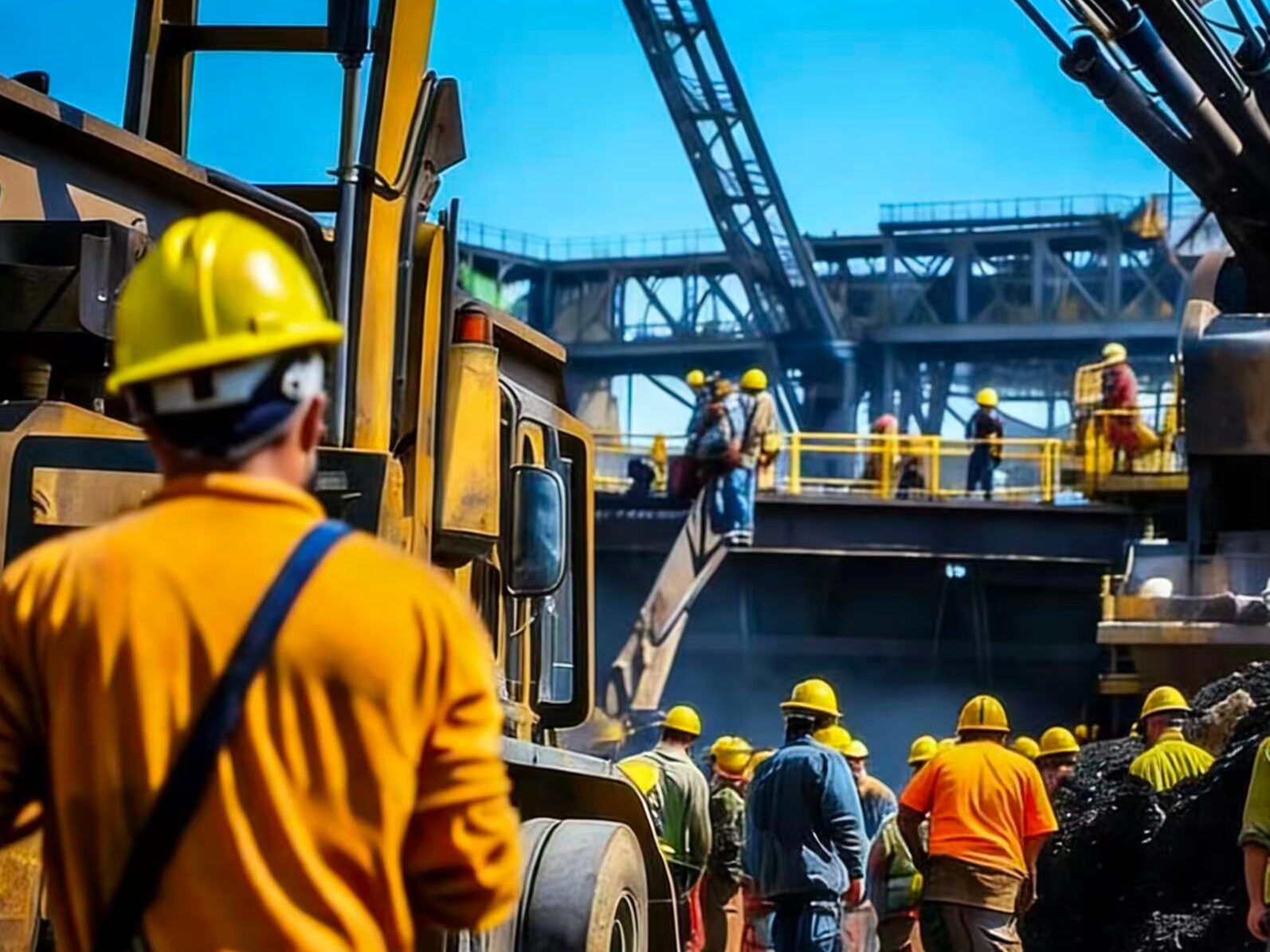




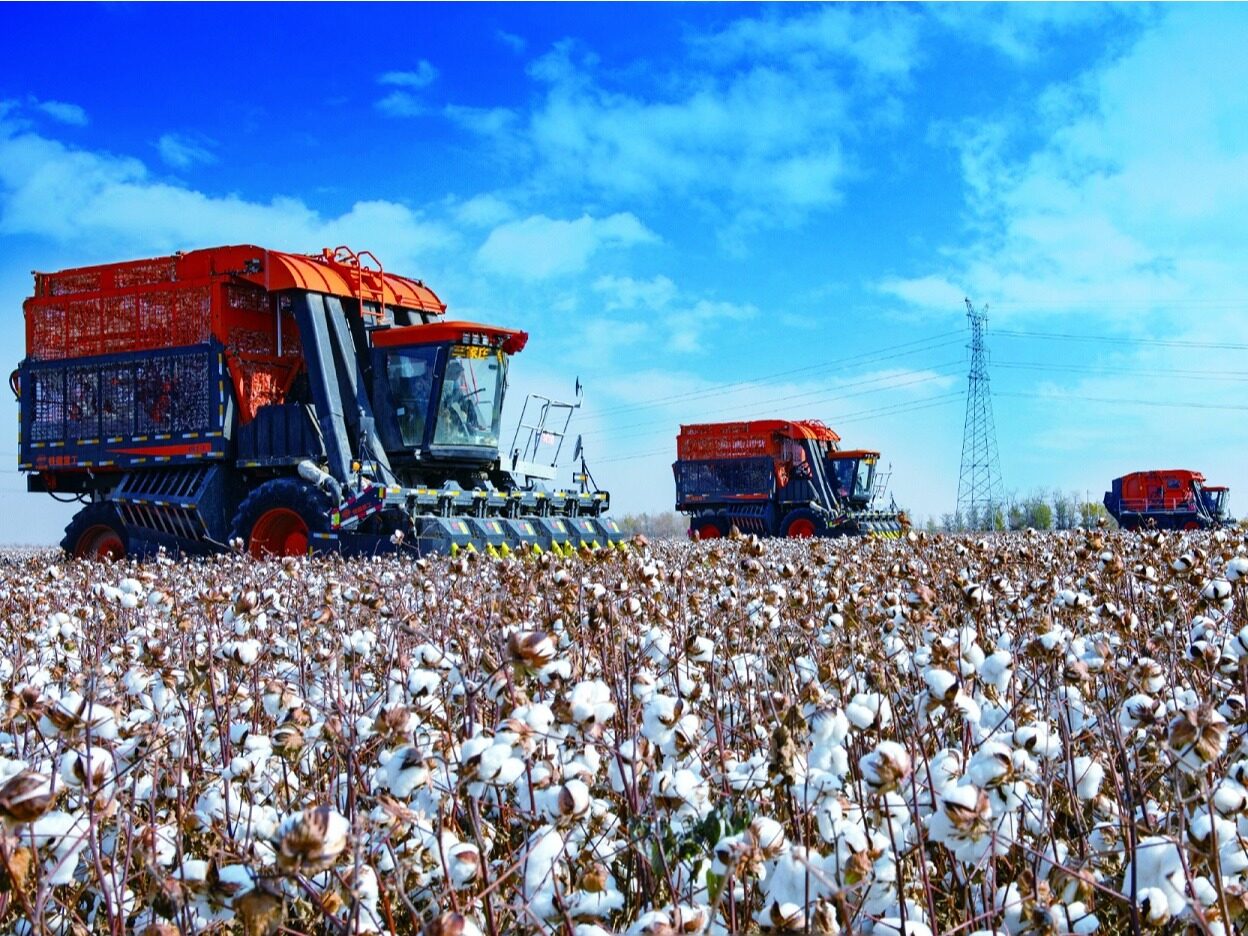






Write something~